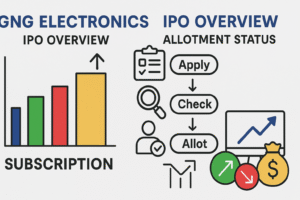
How to Build a ₹1 Crore Corpus with SBI Best Equity Funds in 2025
Dreaming of becoming a crorepati by leveraging the potential of Indian equity markets? With the right SBI equity mutual funds, disciplined investing, and a long-term vision, building a ₹1 crore corpus is not just possible—it’s achievable for every Indian investor. This guide will help you navigate the best SBI equity funds, their recent performance, strategic investment methods, and actionable steps to reach your financial goals.
Why Choose SBI Mutual Funds?
SBI Mutual Fund is India’s largest bank-sponsored mutual fund house, trusted for reliability and scale, with an AUM of over ₹9 lakh crore. With 30+ years’ experience, a partnership with Amundi, and a wide range of equity, debt, and hybrid funds, SBI’s schemes consistently help investors build substantial wealth.
- Strong track record of performance and fund management expertise.
- Diverse options—large, mid, flexi-cap, sectoral, and thematic funds.
- Low minimum investment—SIP as low as ₹500/month, lump sum from ₹1,000.
- Full regulatory transparency and SEBI/AMFI compliance.
Best SBI Equity Funds for Wealth Building (2025)
Selecting the right funds is critical. Here’s a snapshot of the leading SBI equity funds with strong CAGR and assets under management:
| Fund Name | Sub Category | AUM (₹ Cr.) | CAGR (5Y %) | CAGR (10Y %) | Expense Ratio (%) |
|---|---|---|---|---|---|
| SBI Contra Fund | Contra | 46,654 | 30.7 | 17.3 | 0.66 |
| SBI Infrastructure Fund | Sectoral Infra | 4,836 | 27.3 | 16.8 | 1.01 |
| SBI Midcap Fund | Mid Cap | 22,547 | 27.0 | 15.9 | 0.85 |
| SBI Large & Midcap Fund | Large & Mid Cap | 33,248 | 25.1 | 16.1 | 0.75 |
| SBI PSU Fund | Thematic | 5,179 | 31.9 | 15.0 | 0.84 |
| SBI Flexicap Fund | Flexi Cap | 22,011 | 19.5 | 14.4 | 0.85 |
How to Build a ₹1 Crore Corpus
The “magic” of mutual fund investing comes from disciplined SIPs, long investment horizons, and the compounding effect. Here’s a realistic plan to reach ₹1 crore by investing in SBI equity funds:
- Start Early: The longer the horizon, the lower your monthly SIP required due to compounding.
- Choose High-Growth Funds: Select funds with consistent returns, reasonable risk, and low expense ratio.
- Stick to SIP: Systematic Investment Plans help average out costs and instill discipline.
- Reinvest Gains: Stay on growth option to compound returns.
SIP Calculator Example
Let’s say the average expected annual return (CAGR) is 15%. To accumulate ₹1 crore in 20 years:
- Monthly SIP required: ~₹5,300 (approximate, actual value will vary)
The SIP formula used is:
A = P × [ (1 + r)n – 1 ] / r × (1 + r)
Taxation on SBI Equity Funds (FY 2024-25)
Tax obligations can impact your final return. Here’s how equity funds are currently taxed in India:
- Long-Term Capital Gains (LTCG): Gains after 1 year are tax-free up to ₹1.25 lakh/year; above this, taxed at 12.5% (up from 10% last year).
- Short-Term Capital Gains (STCG): For holdings under 1 year, taxed at 20%.
- No Indexation: Indexation benefit has been removed for all equity mutual funds.
Practical Steps: How to Invest
- Define your investment horizon and risk tolerance.
- Complete KYC (PAN, Aadhaar, Address proof).
- Open an account with an investment platform or SBI MF directly.
- Choose and research suitable SBI equity funds based on AUM, past returns, and expense ratio.
- Start with a monthly SIP or lump sum. Monitor and adjust your SIP periodically.
SBI Mutual Fund’s official website, Groww, Paytm Money, and Smallcase are among the top platforms for online investment.
Key Factors Before Investing
- Align funds with financial goals—retirement, children’s education, buying a house.
- Check past 3-5-10 year performance, but remember future returns aren’t guaranteed.
- Choose funds with lower expense ratio for maximized returns.
- Review fund manager expertise and management tenure.
- Don’t ignore portfolio diversification—use 2 to 4 different funds for safer growth.
Risks to Keep in Mind
- Market volatility—returns may vary, and principal is not guaranteed.
- Sector/Thematic funds can be cyclical; consider a diversified approach.
- Policy changes, inflation, global events can affect NAV and growth.
Best Practice Portfolio Example (2025)
For an investor targeting a balanced, high-growth portfolio, a model allocation may look like:
| Fund | Allocation (%) |
|---|---|
| SBI Contra Fund | 30 |
| SBI Midcap Fund | 25 |
| SBI Large & Midcap Fund | 20 |
| SBI PSU Fund | 15 |
| SBI Flexicap Fund | 10 |
Tip: Review portfolio annually and rebalance if any single fund grows beyond 40% of total corpus.








Post Comment